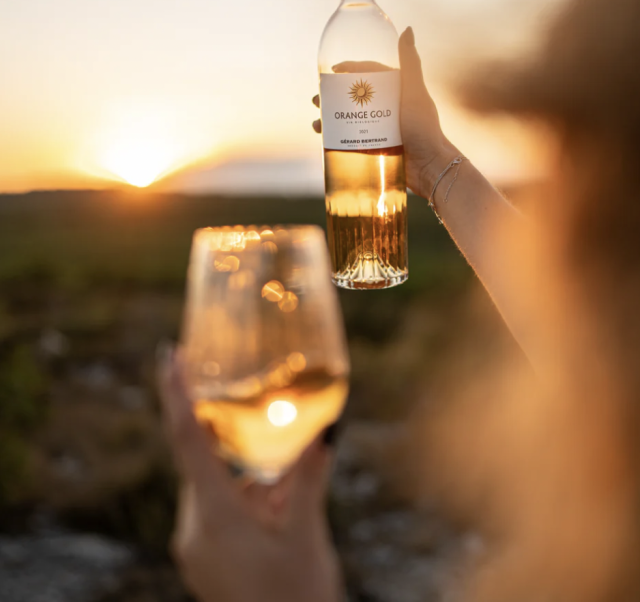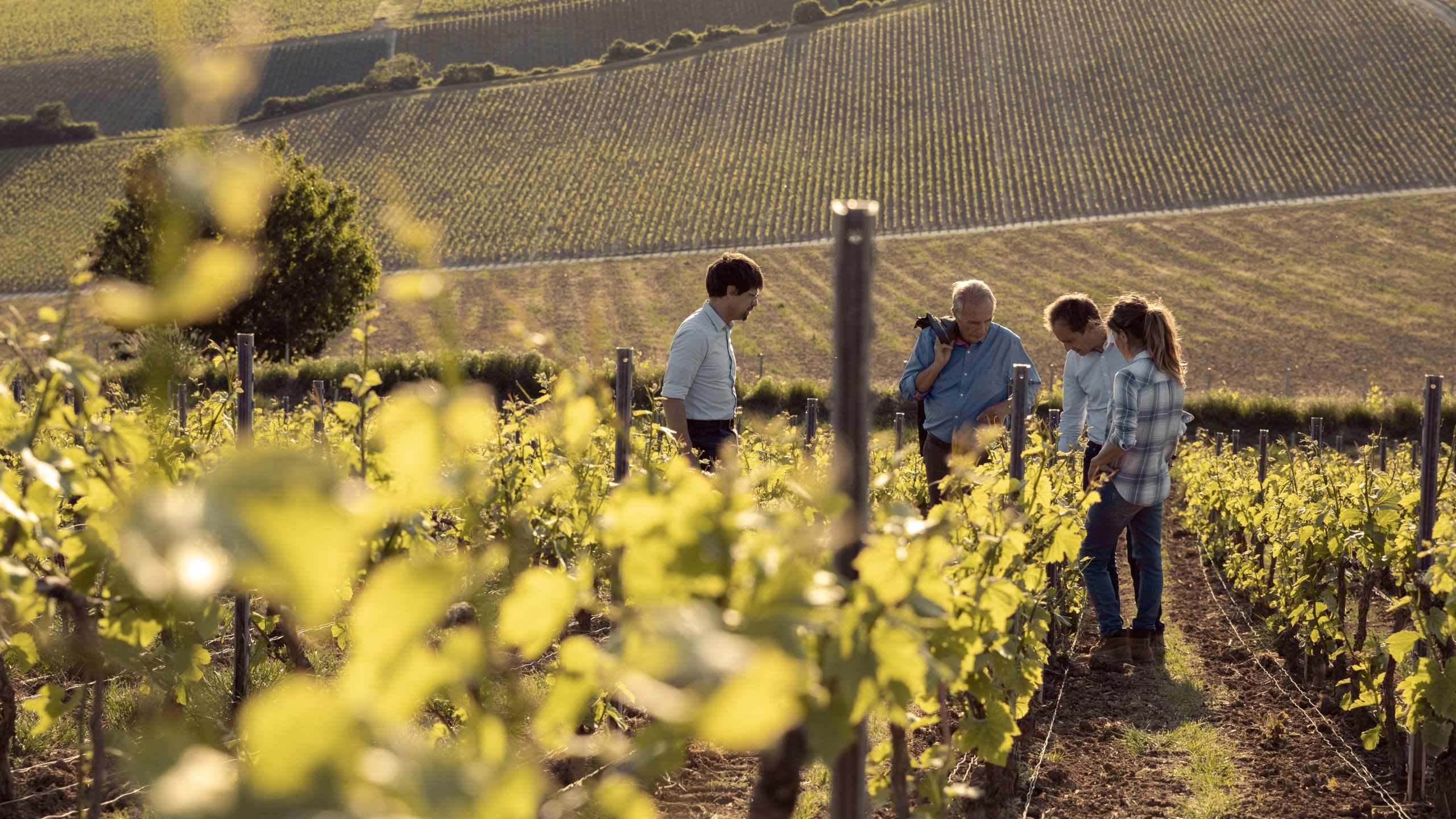Why the future’s bright, the future’s orange wine
As a category that’s attracting bartenders and a younger generation, the future’s bright, the future’s orange wine, according to Languedoc winemaker Gérard Bertrand, who’s taking the “fourth colour” to new heights.

Bertrand – whose Villa Soleilla was the highest-scoring sample in db’s inaugural Orange Wine Masters – has become a powerful force in the expanding orange wine sector: an area of the market gaining more widespread distribution, although still tiny compared to white, red and rosé.
With hues ranging from light amber to golden, orange wines gain their distinctive appearance from letting the skins of white grapes leach their colour and phenolics into the must and fermenting wine over the course of days or weeks, rather than the normal approach for white grapes, which is to immediately press the berries to release the liquid from the colourless pulp, before discarding the skins.
However, such a process is hard to get right, with some grapes better-suited to creating an orange hue, while, whatever the variety, the berries need careful handling to ensure they impart colour, but not bitter-tasting tannins from the skins, with Bertand admitting to db that he had embraced the orange wine category because he had sampled so many disappointing examples.
“I’ve tried many orange wines over the last 10 years, and three years ago I asked my team to buy all the ‘good’ orange wines in the market and we tasted them together,” he told db in an exclusive interview last month, adding that this sampling exercise comprised as many as 85 bottles.
“After the tasting, I said to my team, ‘we should re-invent the wheel’; I was a little bit sad, because out of the 85 wines, around 10-15 were good, and maybe another 20 were ok, but the rest had problems: too much bitterness, dryness and tannin,” he recorded.
What followed was an intense period of experimentation in the cellar, with Bertrand trialling different grapes and processes, such as varying lengths of skin contact, from 2-4 weeks, as well as winemaking with whole bunches, and destemmed grapes, along with local Languedoc varieties, and international ones.
The aim was not just to get the colour right, but also the taste and texture: “The idea was to move from strong to light bitterness, and from tannin to structure,” he told db.
He also recalled that “Grenache [blanc] is very good for orange wine, Viognier too – because the skins easily turn the wine orange – and Chardonnay is also very interesting, but Sauvignon Blanc doesn’t work: the colour never goes orange, even if you leave it for two months in the vats.”
As a result, Bertrand’s Orange Gold brand incorporates Grenache Blanc, Viognier and Chardonnay – as well as Muscat (“for its aromatic qualities”), and certain other local grapes of the Languedoc, which are Marsanne, Mauzac, and Clairette.
He also uses whole berries, which he leaves to ferment without crushing them in vats, although he adds press juice to the blend too, “because that brings a lot of complexity as well as colour”.
As for ageing the wines, here too, Bertrand has been busy, telling db, “We have experimented with stainless steel, concrete, oak, amphorae, wine globes – and done a mix of all these…. I don’t want to reveal all the secrets, but developing the complexity of ageing is also interesting, and, compared to white wine, you can have longer ageing, which allows you to develop the aromatic complexity and polish the tannins, giving you a better structure too.”
Overall, he said, “The purpose is to have elegance, structure and complexity and not too much bitterness and no tannin, which is an enemy for orange wine, because it gives dryness.”
Continuing, he commented, “The secret of wine is to pour a second glass, and to have a second glass of orange wine you have to be very delicate in the winemaking process.”
As for the occasions when one might serve an orange wine, Bertrand is excited to see that his “grand vin”, Villa Soleilla, “is poured in the best restaurants of the world,” and stressed that “a good orange wine goes with all spectrum of cheeses.
Partner Content
“With a cheese platter you can be lost, because a goat’s cheese goes with a white wine; a camembert with red, and a blue cheese with fortified wine, but a good orange wine goes with all types, it is the best pairing, and so orange wine is a game changer for cheeses,” he stated.
It’s also well suited to spicy foods, be they fusion dishes, Asiatic, Indian or anything with pimientos, he observed, noting that “it’s now a question of developing a wine-by-the-glass programme everywhere in the world to give wine lovers and consumers a chance to try orange wines.”
This is something he has already been doing, so that his orange wines are now “selling in 50 countries in the world,” adding, “We like to promote this new colour, and pay tribute to the Georgian people – who have made orange wines for 8,000 years – but now we are helping the category to be developed.”
Indeed, Bertrand believes that his widely-distributed, affordable and “drinkable” orange wines – such as Orange Gold (RRP, around £17) and Naturae (RRP £10) – “have democratised orange wine, and helped it to be more sexy”.
Indeed, he added, “The orange wine category is booming,” noting, “The expertise of somms helps a lot – they are trend setters, and they enjoy selling orange wines now.”
Continuing he said, “Orange wines are not only for geeks or experts, the category is growing double or triple digits everywhere, and I think we will see in the next five years that there are all four colours in the most exciting places.”
Notably, he told db that it was a new set of drinkers that are embracing the category, commenting, “Influencers really enjoy orange wine; this is a wine for Generation Z, it is a really good opportunity for a younger generation to enjoy wine.
“And a younger generation enjoy wine in cocktails, and orange wine cocktails make sense, and bartenders like orange wine, so we are seeing that orange wine can help the wine category arrive in bars,” he noted.
With Bertand’s own Languedoc-based wine business now making more than 500,000 bottles of orange wine, with plans to produce 800,000 bottles next year, he admitted that he is becoming a major player in the market, and, as a result, Languedoc is becoming a centre for the style outside of Georgia.
More generally he forecasted further growth for orange wine, “I think the category will develop for sure and we will see more players, producers and negociants develop orange wine.
“I think the future will remain bright for orange wine.”
Read more
Related news
All the medallists from the Global Orange Wine Masters 2025




